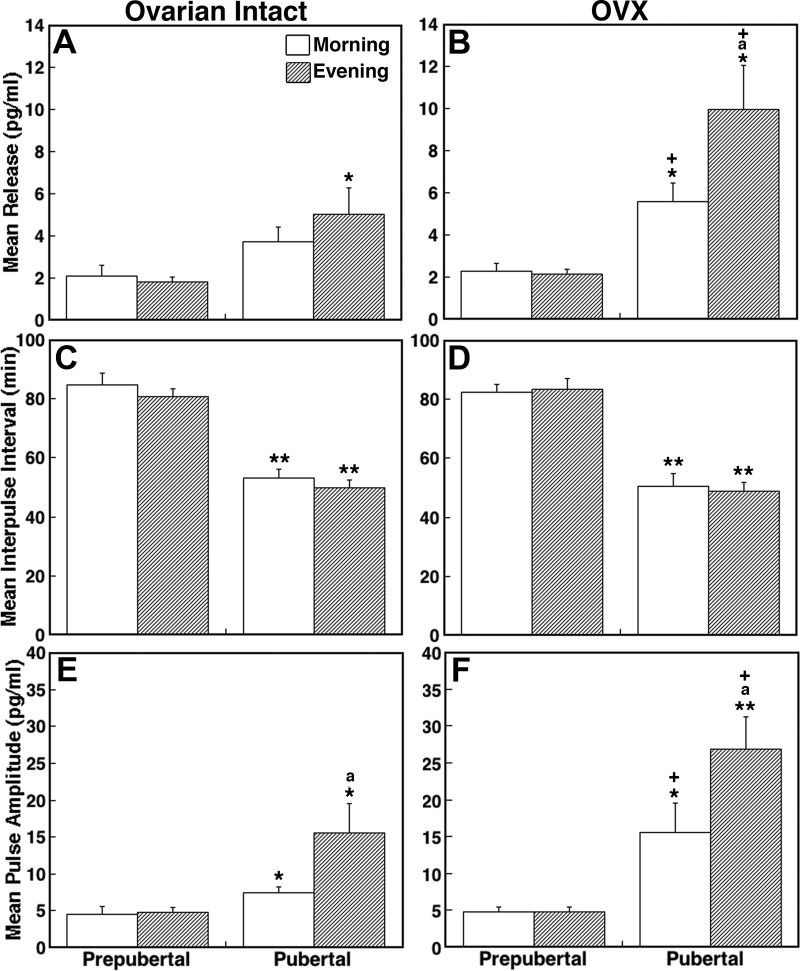Fig. 3.
Developmental changes in KP-54 release in ovarian-intact (A, C, and E) and OVX (B, D, and F) female monkeys. Comparison of the mean release (top panels), IPI (middle panels), and pulse amplitude (bottom panels) are shown. Data were obtained during the morning (open bars) or evening (shaded bars) sessions in prepubertal and pubertal monkeys. Overall mean KP-54 release and pulse amplitude in ovarian intact pubertal monkeys were significantly (P < 0.01 and P < 0.05, respectively) greater than those in ovarian intact prepubertal monkeys. Similarly, the IPI in ovarian intact pubertal monkeys was significantly (P < 0.01) shorter than that in ovarian intact prepubertal monkeys. Overall mean KP-54 release and pulse amplitude in OVX pubertal monkeys were significantly (P < 0.01 for both) greater than those in OVX prepubertal monkeys. Similarly, the IPI in OVX pubertal monkeys was significantly (P < 0.01) shorter than that in OVX prepubertal monkeys. Comparison between OVX and ovarian-intact monkeys indicated that mean KP-54 and pulse amplitude in OVX pubertal monkeys were significantly (P < 0.01 for both) greater than those in ovarian intact pubertal monkeys. *, P < 0.05 and **, P < 0.01 vs. prepubertal; a, P < 0.05 vs. morning; +, P < 0.05 vs. ovarian-intact monkeys. The number of prepubertal animals: ovarian intact morning, n = 7, and evening, n = 7; OVX: morning, n = 7, and evening, n = 8. The number of pubertal animals: ovarian-intact morning, n = 6, and evening, n = 8; OVX morning, n = 6, and evening, n = 6. Data are mean ± sem.

